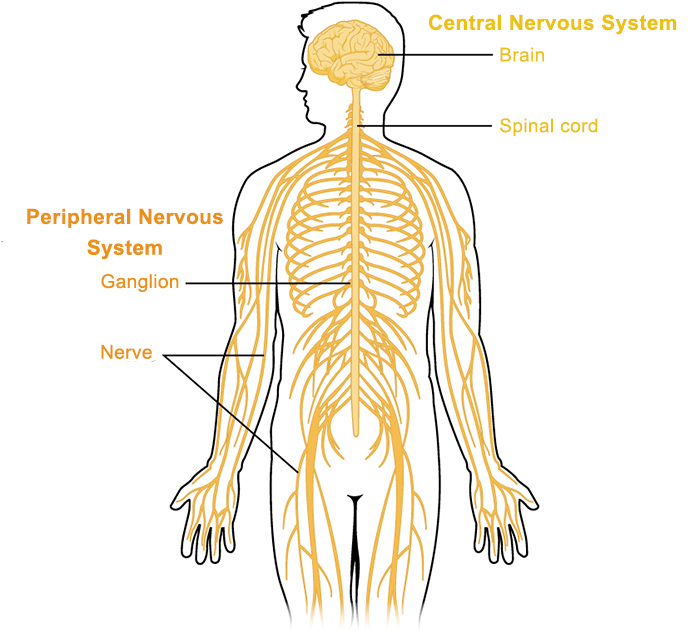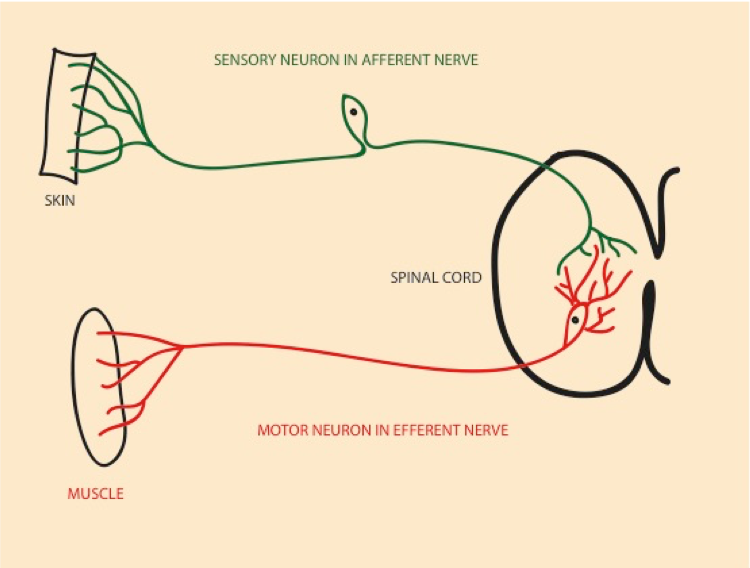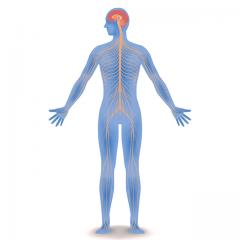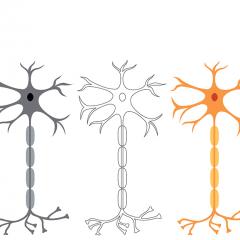Peripheral nervous system

Our nervous system is divided in two components: the central nervous system (CNS), which includes the brain and spinal cord, and the peripheral nervous system (PNS), which encompasses nerves outside the brain and spinal cord. These two components cooperate at all times to ensure our lively functions: we are nothing without our nervous system!
Unlike the brain and the spinal cord of the central nervous system that are protected by the vertebrae and the skull, the nerves and cells of the peripheral nervous system are not enclosed by bones, and therefore are more susceptible to trauma.
If we consider the entire nervous system as an electric grid, the central nervous system would represent the powerhouse, whereas the peripheral nervous system would represent long cables that connect the powerhouse to the outlying cities (limbs, glands and organs) to bring them electricity and send information back about their status.

Image credit: Alessandra Donato
Basically, signals from the brain and spinal cord are relayed to the periphery by motor nerves, to tell the body to move or to conduct resting functions (like breathing, salivating and digesting), for example. The peripheral nervous system sends back the status report to the brain by relaying information via sensory nerves (see above image).
As with the central nervous system, the basic cell units of the peripheral central nervous system are neurons. Each neuron has a long process, known as the axon, which transmits the electrochemical signals through which neurons communicate.
Axons of the peripheral nervous system run together in bundles called fibres, and multiple fibres form the nerve, the cable of the electric circuit. The nerves, which also contain connective tissue and blood vessels, reach out to the muscles, glands and organs in the entire body
Nerves of the peripheral nervous system are classified based on the types of neurons they contain - sensory, motor or mixed nerves (if they contain both sensory and motor neurons), as well as the direction of information flow – towards or away from the brain.
The afferent nerves, from the Latin "afferre" that means "to bring towards", contain neurons that bring information to the central nervous system. In this case, the afferent are sensory neurons, which have the role of receiving a sensory input – hearing, vision, smell, taste and touch - and pass the signal to the CNS to encode the appropriate sensation.
The afferent neurons have also another important subconscious function. In this case, the peripheral nervous system brings information to the central nervous system about the inner state of the organs (homeostasis), providing feedback on their conditions, without the need for us to be consciously aware. For example, afferent nerves communicate to the brain the level of energy intake of various organs.
The efferent nerves, from the Latin "efferre" that means "to bring away from", contain efferent neurons that transmit the signals originating in the central nervous system to the organs and muscles, and put into action the orders from the brain. For example, motor neurons (efferent neurons) contact the skeletal muscles to execute the voluntary movement of raising your arm and wiggling your hand about.
Peripheral nervous system nerves often extend a great length from the central nervous system to reach the periphery of the body. The longest nerve in the human body, the sciatic nerve, originates around the lumbar region of the spine and its branches reach until the tip of the toes, measuring a meter or more in an average adult.
Importantly, injuries can occur at any point in peripheral nerves and could break the connection between the "powerhouse" and its "cities", resulting in a loss of function of the parts of the body that nerves reach into. So, it of great interest for scientists to understand how the nerves, or even how the axonal structure within the nerves, are protected from the constant mechanical stresses exerted on them. Work in this area of biology is carried out by Dr. Sean Coakley, in the laboratory of Prof Massimo Hilliard.
The peripheral nervous system can be divided into somatic, autonomic and enteric nervous systems, determined by the function of the parts of the body they connect to.
Author: Alessandra Donato from the Hilliard Lab
Top image credit: OpenStax Anatomy and Physiology / Wikimedia


